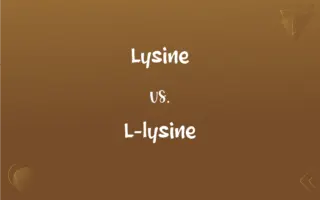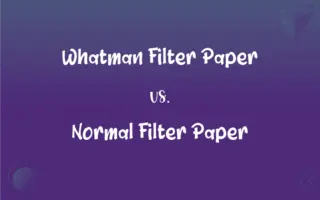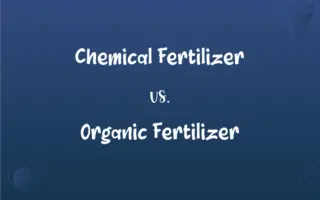Jasmine Rice vs. White Rice: What's the Difference?
Edited by Aimie Carlson || By Harlon Moss || Updated on October 17, 2023
Jasmine rice is a long-grain, fragrant rice variety from Thailand, while white rice is a general term for milled rice with the husk, bran, and germ removed.

Key Differences
Jasmine rice is a distinct variety of rice that originates from Thailand. Known for its fragrant aroma and slightly sticky texture, it's often used in Asian dishes. On the other hand, white rice refers to any rice that has been milled to remove the husk, bran, and germ, making it white in appearance.
When cooked, jasmine rice has a soft, slightly sticky consistency, making it perfect for dishes that require rice to clump together. In contrast, white rice can come from various rice varieties and, depending on its type, might not be as sticky as jasmine rice.
From a nutritional standpoint, jasmine rice and white rice have similarities, as both are sources of carbohydrates and provide energy. However, since white rice is a broader category, its nutritional profile can vary based on the specific variety and processing method.
One of the hallmark characteristics of jasmine rice is its aromatic scent, which is reminiscent of jasmine flowers and popcorn. This aroma is a natural property of the rice. White rice, being a general category, might not have a distinct aroma unless it belongs to a fragrant rice variety.
In terms of global consumption, white rice is a staple in many cultures around the world, given its wide range of varieties. Meanwhile, jasmine rice holds a special place in Southeast Asian cuisines, especially in Thai dishes.
ADVERTISEMENT
Comparison Chart
Origin
Thailand
Various regions
Texture after cooking
Soft, slightly sticky
Varies, often non-sticky
Aroma
Fragrant (jasmine/popcorn-like)
Typically non-aromatic
Nutritional Profile
Carbohydrate-rich
Carbohydrate-rich, varies by type
Usage in Cuisines
Common in Southeast Asian dishes
Staple in many global cuisines
ADVERTISEMENT
Jasmine Rice and White Rice Definitions
Jasmine Rice
A type of rice with a slightly sticky texture when cooked.
Jasmine rice is perfect for dishes that require the rice to clump.
White Rice
Milled rice with its husk, bran, and germ removed.
He boiled the white rice until it was soft and fluffy.
Jasmine Rice
A fragrant rice variety originating from Thailand.
She prepared a delicious Thai curry to serve with jasmine rice.
White Rice
The polished version of brown rice.
Switching from brown to white rice can change the dish's nutritional content.
Jasmine Rice
An essential ingredient in Southeast Asian cuisines.
Green curry and jasmine rice are a popular combination.
White Rice
A versatile grain used as a staple in many cuisines.
White rice serves as the base for various dishes worldwide.
Jasmine Rice
Rice with a natural scent reminiscent of jasmine flowers.
The unique fragrance of jasmine rice sets it apart from other varieties.
White Rice
Rice that has undergone processing to improve its appearance and extend its shelf life.
Storage is easier with white rice due to its longer shelf life.
Jasmine Rice
A long-grain rice known for its distinct aroma.
The scent of jasmine rice cooking filled the kitchen.
White Rice
Non-aromatic rice commonly consumed globally.
White rice pairs well with almost any savory dish.
FAQs
Is jasmine rice a type of white rice?
Yes, jasmine rice is a type of white rice known for its aroma and origin from Thailand.
Which is stickier, jasmine rice or white rice?
Jasmine rice is slightly stickier, but the stickiness of white rice can vary based on the specific variety.
Which has more nutrients, jasmine rice or general white rice?
Both are similar in terms of carbohydrate content, but the nutritional profile can vary based on the specific variety of white rice.
What is jasmine rice?
Jasmine rice is a fragrant, long-grain rice variety from Thailand.
How does white rice differ from brown rice?
White rice is milled and polished, removing its husk, bran, and germ, while brown rice retains its bran and germ.
What's the main characteristic of jasmine rice?
Jasmine rice is known for its fragrant aroma and slightly sticky texture when cooked.
Can I use jasmine rice for sushi?
While sushi traditionally uses short-grain or medium-grain rice, jasmine rice can be used as a substitute, but it will have a distinct aroma and slightly different texture.
Why is jasmine rice called 'jasmine'?
It's named for its natural fragrance, which is reminiscent of jasmine flowers.
Is white rice gluten-free?
Yes, white rice is naturally gluten-free.
How can I enhance the aroma of jasmine rice?
Rinsing jasmine rice before cooking and using the right water-to-rice ratio can help enhance its natural aroma.
What dishes are best suited for white rice?
White rice is versatile and pairs well with curries, stir-fries, casseroles, and many other dishes.
Where is jasmine rice commonly used?
Jasmine rice is commonly used in Southeast Asian cuisines, especially Thai dishes.
Is white rice aromatic?
Typically, white rice is non-aromatic, unless it's a specific fragrant variety like jasmine or basmati rice.
Can I substitute jasmine rice for white rice in recipes?
Yes, but keep in mind jasmine rice's distinct aroma and slightly sticky texture when making the substitution.
Which is more expensive, jasmine rice or regular white rice?
Jasmine rice may be more expensive due to its distinct qualities and origin, but prices can vary based on region and brand.
Why is white rice white?
White rice is white because it's been milled to remove the husk, bran, and germ.
Is jasmine rice considered healthy?
Jasmine rice, like other white rice varieties, is a good source of energy and carbohydrates but lacks some nutrients found in whole grains.
How should I store jasmine rice?
Jasmine rice should be stored in a cool, dry place in an airtight container.
Does white rice have a distinct aroma?
In general, white rice doesn't have a distinct aroma, unless it's a fragrant variety.
What's the primary use of white rice globally?
White rice is a staple food in many cultures worldwide.
About Author
Written by
Harlon MossHarlon is a seasoned quality moderator and accomplished content writer for Difference Wiki. An alumnus of the prestigious University of California, he earned his degree in Computer Science. Leveraging his academic background, Harlon brings a meticulous and informed perspective to his work, ensuring content accuracy and excellence.
Edited by
Aimie CarlsonAimie Carlson, holding a master's degree in English literature, is a fervent English language enthusiast. She lends her writing talents to Difference Wiki, a prominent website that specializes in comparisons, offering readers insightful analyses that both captivate and inform.




































































